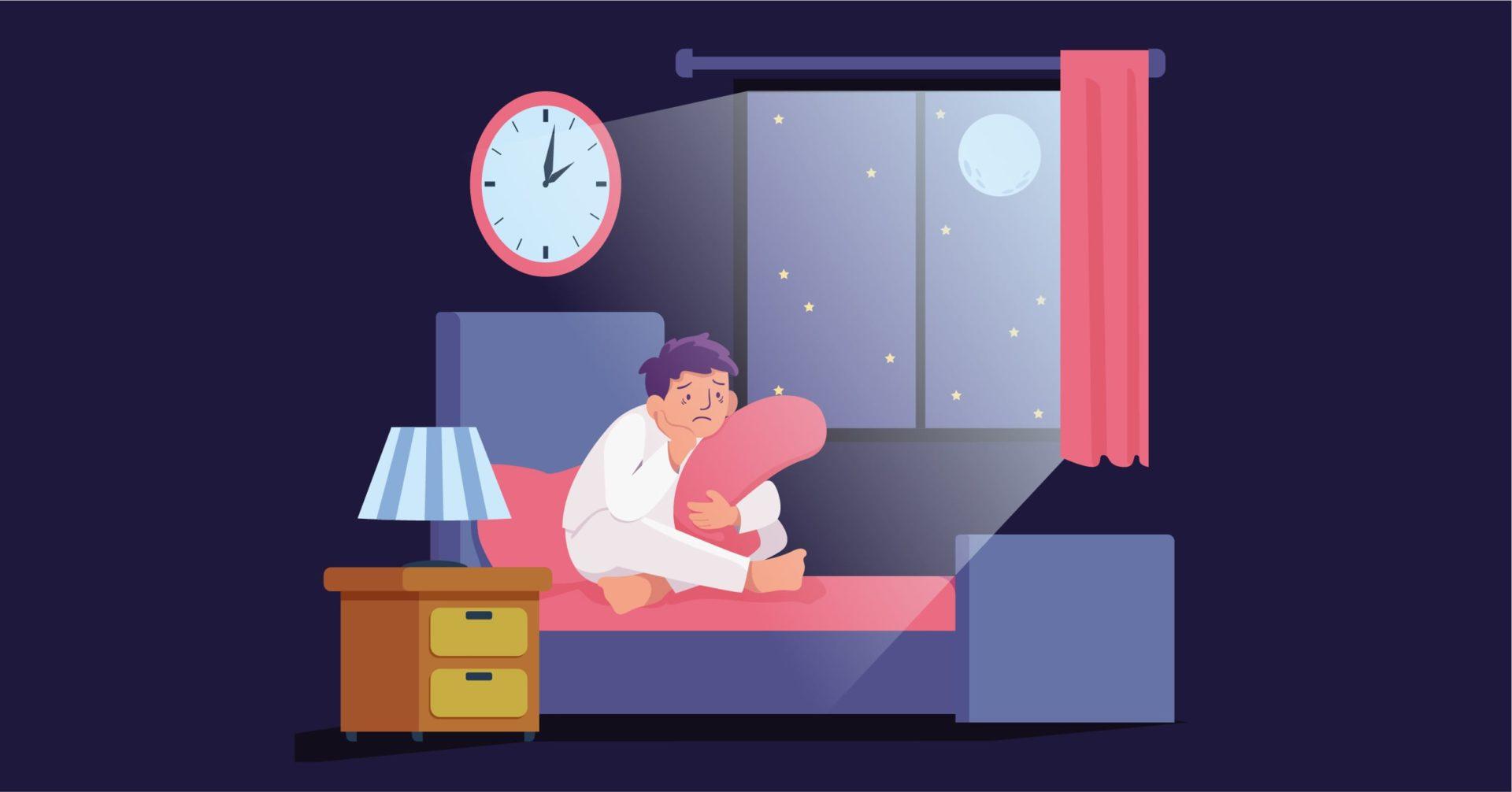Overview
Narcolepsy is a sleep disorder marked by excessive sleepiness during daytime, as well as sudden lapses into a state of sleep and episodes of cataplexy (loss of muscle strength in a wakeful state).
The disorder is classified as Type 1 Narcolepsy, which occurs with the manifestation of cataplexy and hypocretin deficiency, and Type 2 Narcolepsy, considered to occur without the aforementioned symptom.
There is a possibility of a male preponderance in the prevalence of Narcolepsy, and the onset is most commonly in adolescence. The occurrence of cataplexy is attributed almost always to the deficiency of hypocretin, also known as orexin.
The presence of parasomnias, environmental factors such as infection, and genetic factors are associated with the disorder. The pharmacological treatment of Narcolepsy is dependent on the occurring symptoms.
Combining non-pharmacological interventions such as behavior reinforcement, sleep hygiene, and lifestyle modifications along with medication is considered helpful in management.
Signs and Symptoms
- Daytime drowsiness and frequent daytime naps
- Sudden occurrences of sleep
- Cataplexy: a loss in muscle strength brought about by intense emotions, resulting in loose jaw, drooping eyelids, falling, head bobbing, and more
- Feeling like being in a haze
- Continuing activities automatically, as if on “autopilot mode”
- Being unable to remember activities done recently
- Vivid hallucinations before falling asleep, during the process of falling asleep, or upon awakening
- Frequent nightmares
- Sleep paralysis
- Waking up in the middle of the night to eat
- Obesity
Risk Factors
A male preponderance has been observed in some cases in the prevalence of Narcolepsy. The occurrence of Narcolepsy has been observed with a wide age range, with the typical onset of symptoms occurring in adolescence. A peak in symptoms is observed at adolescence and a second peak is usually observed in the mid-to-late thirties.
Narcolepsy that occurs with cataplexy is largely attributed to the deficiency of a neurochemical known as hypocretin (or orexin). Hypocretin is responsible for wakefulness, and its imbalance can disrupt brain functioning and thereby cause symptoms of Narcolepsy.
Due to the occurrence of Narcolepsy without cataplexy, however, it is considerable that a hypocretin deficiency is not the only causative factor linked to Narcolepsy, and hence the interaction of multiple factors is speculated.
While genetic correlates have been identified, there does not seem to be a significant heritability involved, with a 1-2% prevalence among first-degree relatives. Autoimmune gene mutations and abnormalities have also been considered.
The contribution of environmental factors is also studied. Infectious risk factors for Narcolepsy have been largely identified through the increased presence of antibodies among patients, including influenza and illnesses caused by streptococcus pyogenes.
The occurrence of Narcolepsy also saw a significant increase in Europe after the use of an H1N1 vaccine, Pandemrix. While the exact association is not known, it is considered to be attributable to the particular composition of the Pandemrix vaccine, and a causal link between H1N1 influenza vaccination and Narcolepsy has not been established.
The occurrence of parasomnias, as well as traumatic brain injuries have also been associated with Narcolepsy. It may occur as a comorbidity with bipolar, depressive, and anxiety disorders. Schizophrenia is a rare comorbidity.
Diagnosis
There is often a considerable gap between the onset of symptoms among individuals and seeking a diagnosis. The diagnostic process consists of clinical evaluations, electrophysiological assessment, and physical tests such as polysomnography, Multiple Sleep Latency Test, and examination for cataplexy and hypocretin deficiency.
The DSM-5 lists the following criteria for the diagnosis of Narcolepsy:
1. Recurrent periods of an irrepressible need to sleep, lapsing into sleep, or napping occurring within the same day. These must have been occurring at least three times per week over the past 3 months.
2. The presence of at least one of the following:
- Episodes of cataplexy, defined as either (a) or (b), occurring at least a few times per month:
a. In individuals with long-standing disease, brief (seconds to minutes) episodes of sudden bilateral loss of muscle tone with maintained consciousness are precipitated by laughter or joking.
b. In children or in individuals within 6 months of onset, spontaneous grimaces or jaw-opening episodes with tongue thrusting or a global hypotonia, without any obvious emotional triggers. - Hypocretin deficiency, as measured using cerebrospinal fluid (CSF) hypocretin-1 immunoreactivity values (less than or equal to one-third of values obtained in healthy subjects tested using the same assay, or less than or equal to 110 pg/mL). Low CSF levels of hypocretin-1 must not be observed in the context of acute brain injury, inflammation, or infection.
- Nocturnal sleep polysomnography showing rapid eye movement (REM) sleep latency less than or equal to 15 minutes, or a multiple sleep latency test showing a mean sleep latency less than or equal to 8 minutes and two or more sleep-onset REM periods.
Narcolepsy is specified as Type 1, which occurs with cataplexy, and Type 2, which occurs without cataplexy. Further specifications are made on the basis of hypocretin levels, the presence of ataxia and deafness, obesity and type 2 diabetes, and that which is secondary to a medical condition.
Severity specifications of Narcolepsy are influenced by degree of disturbance in nocturnal sleep, occurrence of daytime sleepiness, cataplexy, and the resistance or compliance to drugs.
Treatment
The treatment of Narcolepsy takes into consideration the need to manage excessive daytime sleepiness, cataplexy, secondary symptoms, and situational guidance.
Pharmacological approaches to the treatment of Narcolepsy depend greatly on the symptoms presented. Multiple medications may be prescribed on the basis of fluctuations in the presentation of symptoms, disease severity, presence of comorbidities, and other lifestyle factors.
Excessive daytime sleepiness is targeted with the help of wakefulness promoting agents such as Modafnil and Armodafnil, and are considered to be the first line of treatment for the symptom. Sodium oxybate, pitolisant, and solriamfetol are also similar approved drugs for treatment.
Sodium oxybate is considered to have more efficacy among patients who experience the symptom of cataplexy, and is also beneficial for nocturnal sleep and hallucinations, but may worsen sleep-disordered breathing.
Antidepressants such as SSRIs (Selective Serotonin Reuptake Inhibitors), SNRIs (Serotonin-Norepinephrine Inhibitors) and TCAs (Tricyclic Antidepressants) are also used for the treatment of cataplexy.
It is important for non-pharmacological management to be incorporated along with medication. Adequate education with regards to the disorder in order to facilitate the comprehension of the symptoms and their outcomes is ideal, as well as further psychosocial guidance pertaining to various areas of functioning and the challenges created by the manifestation of Narcolepsy within them.
Further, lifestyle modifications may be reinforced through behavioral therapy, by focusing on regular night sleep or scheduled naps. Inclusion of regular exercise, proper consumption of caffeine, and adequate diet may also be made.
Differential Diagnosis
1. Other hypersomnias: Hypersomnolence and narcolepsy are similar in context of the degree of daytime sleepiness, age at onset, and stable course over time but can be distinguished based on distinctive clinical and laboratory features.
2. Sleep deprivation and insufficient nocturnal sleep: Sleep deprivation and insufficient nocturnal sleep are common in adolescents and shift workers. In adolescents, difficulties falling asleep at night are common, causing sleep deprivation.
3. Sleep apnea syndromes: Sleep apneas are especially likely in the presence of obesity. Obstructive sleep apnea is more frequent than narcolepsy, cataplexy may be ignored), and the individual is assumed to have obstructive sleep apnea unresponsive to usual therapies.
4. Major depressive disorder: Narcolepsy or hypersomnia may be associated or confused with depression. Cataplexy is not present in depression.
5. Conversion disorder: Atypical features, such as long-lasting cataplexy or unusual triggers, may be present in conversion disorder. Long-lasting pseudo cataplexy may occur during sessions, providing the examining physician time to verify reflexes, which remain intact.
6. Attention-deficit/hyperactivity disorder or other behavioural problems: In children and adolescents, sleepiness can cause behavioural problems, including aggressiveness and inattention, leading to a misdiagnosis of attention-deficit/hyperactivity disorder.
7. Seizures: In young children, cataplexy can be misdiagnosed as seizures. Seizures are not triggered by emotions, and when they are, the trigger is not usually laughing or joking. During a seizure, individuals are more likely to hurt themselves when falling.
8. Schizophrenia: In the presence of hallucinations, individuals may think these experiences are real—a feature that suggests schizophrenia. Similarly, with stimulant treatment, persecutory delusions may develop. If cataplexy is present, the clinician should first consider these symptoms as secondary to narcolepsy before considering a co-occurring diagnosis of schizophrenia.
Comorbidity
Narcolepsy can co-occur with bipolar, depressive, and anxiety disorders, and sometimes with schizophrenia. Comorbid sleep apnea should be considered if there is a sudden aggravation of preexisting narcolepsy.
Specialists
Individuals may approach primary healthcare providers or a sleep clinic with the symptoms of Narcolepsy. Clinical evaluations and necessary physical and laboratory tests may be carried out by qualified professionals. Sleep specialists may be involved in the management of symptoms.
In Conclusion
Other sleep problems, including obstructive sleep apnea, which causes periodic pauses in breathing during the night, restless legs syndrome, and even insomnia, may also be present in narcoleptics.
Some narcoleptics exhibit automatic behavior during brief episodes of the disorder. For instance, you might doze off while writing, typing, or driving—tasks that you would otherwise perform—and carry them out while still asleep. You can’t recall what you did when you woke up, and it’s likely that you didn’t do it very well.
If your excessive daytime sleepiness interferes with your personal or professional life, consult a doctor.
Book your session with us today.





